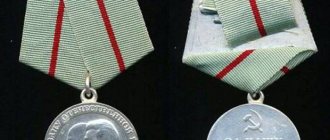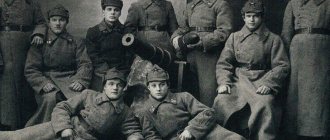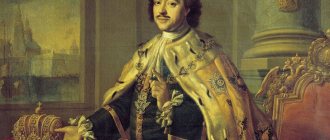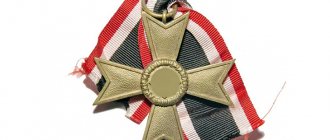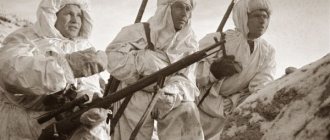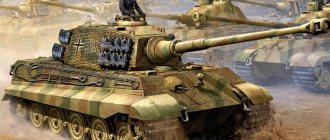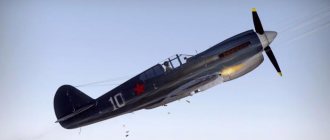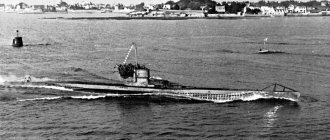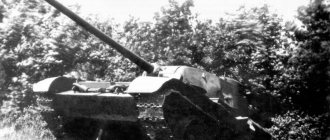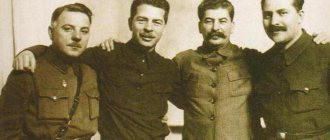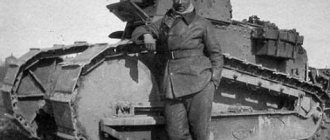The title “Hero of the Soviet Union” is a unique award on a global scale. For outstanding actions for the benefit of the state, this title began to be awarded to citizens of the USSR in 1934. A certificate was considered documentary evidence of the status obtained. Since 1936, the Hero of the USSR began to be awarded the Order of Lenin. Then it was decided that a special award should correspond to the title of Hero of the USSR. The medal was developed and introduced only in 1939 and became the primary insignia for citizens holding the title “Hero of the Soviet Union.”
Appearance
The medal is called "Gold Star". For its production, 950 gold was taken to emphasize the high significance and status of the title of Hero of the USSR.
Medal "Gold Star"
The medal is shaped like a star, with 5 lines emanating from the center, dividing each ray into two sides. The height of the star is 3 cm. The reverse side of the medal is smooth with a frame. The inscription “Hero of the USSR” is stamped in the central part, the height of the letters is 0.4 cm, the width is 0.2 cm. At the top of the star the serial number of the medal is stamped, the size of the numbers is 0.1 cm.
The star has a fastening in the form of a ring, which serves as a coupling to the award block in the shape of a rectangle measuring 19.5 mm x 15 mm. There is a red moire ribbon inside the frame. In order to attach the award to clothing, there is a pin and nut on the back of the shoe. The material of the block is gilded silver. The total weight of the medal is approximately 35 g, weight without block is 21.5 g.
Red Banner
One of the first Soviet orders, which until 1930 was considered the highest in the USSR award system. It was established on September 16, 1918 and was awarded to soldiers who showed special bravery and courage in defending the Fatherland.
Warships and units also received an honorary accessory - after the award they were called Red Banner.
Among the cavaliers is Marshal of the USSR Klim Voroshilov, who received the 5th Order of the Red Banner on November 3, 1944. But this is not a record either. Air Marshal, Hero of the USSR Ivan Pstygo was awarded it 8 times.
Varieties
During the entire presentation of the award, several nuances were finalized. There were the following types of stars:
- With an enlarged block 25 mm wide, connecting ears served as fastenings.
- The standard block is narrower by 5.5 mm, and an intermediate ring is used as a connection.
- Additional engraving on the reverse side - numbers two, three or four in Roman symbols and a number, respectively, for persons who have been repeatedly (twice, three times and four times) awarded the title of Hero of the USSR.
- Additional "D" on the back with a number - these medals are a duplicate of a lost original.
Glory
This award has three degrees, the 1st being considered the highest. It was established on November 8, 1943 simultaneously with the Order of Victory to encourage privates, sergeants and junior lieutenants of aviation. The badge was awarded only to people for personal merits at the fronts - Red Army and naval units were not awarded.
The awarding was carried out in strict sequence: from the lowest degree to the highest. To make the 3rd degree badge, silver was used, and the 2nd degree - gilding. The highest 1st degree was minted from gold.
Simultaneously with the presentation of the badge of “Glory,” the cavaliers were awarded the next military rank.
Pre-war time
Expert opinion
Sidorenko Alexander
Antiques appraiser, numismatist
By 1939, more than 120 citizens in the USSR had the status of Heroes. Therefore, the question has arisen about the need to issue insignia. At that time, distinguished citizens were awarded the Order of Lenin, but the Presidium expressed a firm intention to additionally reward them for military exploits and services in defending the state. This was due to the fact that the Order of Lenin was awarded for achievements in various fields.
After the design of the star was approved, all Heroes of the USSR were awarded it. Among the recipients were pilots who carried out a rescue operation to evacuate the crew of the icebreaker Chelyuskin. Awards were then given to participants in the Spanish war and to several foreign citizens. Next, the “Hero Star” was awarded to participants in battles near Lake Khasan. It is significant that among those awarded there were also ordinary soldiers. For completing a continuous flight from Moscow to the Far East, awards were given to two Soviet pilots.
Bohdan Khmelnytsky
Another Soviet sign with three degrees, introduced by decree of November 10, 1943. It was awarded to soldiers and commanders of the army and navy, partisan detachments who participated in the destruction of German troops and the liberation of Soviet lands from the Nazis.
The initiative to establish the order belonged to Lieutenant General Khrushchev, who was a member of the military council of the First Ukrainian Front. It is not in vain that he bears the name of Bogdan Khmelnytsky, because he is a hero of the Ukrainian liberation movement.
The Great Patriotic War
Awards for exploits performed between 1941 and 1945 occupy the largest share of all medals received. More than 90% of the Stars of Heroes awarded were to participants in WWII battles. More than 11 thousand citizens were awarded the high award; the fourth part of all it was awarded posthumously. An incredible fact, but during the Great Patriotic War, the title of Hero of the USSR was awarded to entire units. The dedication of the soldiers and officers who fought to the death in the battles of those years was appreciated and awarded Gold Stars.
Wartime Medal
Suvorov
The Suvorov Order was established by decree of July 29, 1942, simultaneously with Kutuzov and Alexander Nevsky. They were awarded to outstanding army commanders and units that distinguished themselves at the front.
The sign was made according to the sketch of Petr Skokan, who at that time worked as an architect at the Central Military Institute. Over 5 military years, 7146 awards were given.
Post-war period
The history of awarding these medals did not end in the post-war period. In the 1950s, the stars of the Hero of the USSR were received by participants in the Korean War. About 90 more people were nominated for awards for the Afghan campaign, 28 of them were awarded posthumously.
Due to various circumstances, medals did not always reach their rightful owners, so the presentation of awards for the Great Patriotic War and subsequent battles continued until the end of the existence of the Soviet Union. 1992 is the year the last Hero of the USSR medal was awarded. Just two months after this, the title began to be called “Hero of the Russian Federation.”
Award rules
A specific list of grounds for receiving a medal is not specified in the legislation. The Golden Star and the title of Hero of Russia are awarded to citizens of the Russian Federation who have committed a feat or heroic deed. If the Hero of Russia also receives the title of Hero of Labor of the Russian Federation, then a commemorative bronze bust should be installed in his homeland.
The medal is awarded only by decision of the President of Russia. In general, everything related to the title and state award is approved by presidential decrees.
Along with the Gold Star, a diploma of the President of the Russian Federation and a certificate indicating the details of the recipient of the award, the date, number and order that is the basis for the award are awarded. Documents are signed by the President of the Russian Federation and certified with the state stamp. The entire set is packaged in a case for easy delivery and further storage.
When worn, the Gold Star is located on the left side of the chest above all other awards. Even if there is an order among the awards, the Hero of Russia medal should still be higher.
Price of the Gold Star medal
The Gold Star medal of the Hero of the Soviet Union has great historical value. It symbolizes an entire era and is the cultural heritage of our country. It can only be bought at foreign auctions. The price of a genuine medal with confirmed information about the owner exceeds $4,000. It is worth noting that according to confirmed data, only the name of the original owner, to whom the medal was awarded for his services, can be found out. Information about the actual owner is confidential. In the Russian Federation, the sale of medals is prohibited by law.
Ushakova
On March 3, 1944, the Presidium of the Armed Forces of the Soviet Union established a naval award badge in honor of Admiral Ushakov. It was awarded to particularly distinguished naval officers who organized and brilliantly carried out operations to destroy enemy forces and military equipment.
The sign has two degrees. The first is platinum, in the shape of a five-pointed star. The second is silver, of the same shape, but the design does not have a border of branches. The order ribbon is made in the colors of the St. Andrew's flag.
Recipients of the Gold Star medal of Hero of the USSR
Among the award owners are people of different statuses and nationalities. These are ordinary soldiers and high-ranking military personnel, women and men, residents of small villages and top officials of the country. All these people fought for their state. 154 people were recognized twice as Heroes, marshals were nominated three times - Budyonny S.M., Kozhedub I.N. and Pokryshkin A.I. Four awards are given to famous personalities - Zhukov G.K. and Brezhnev L.I. A total of 12,776 people were awarded, of which 95 were women and 44 were citizens of foreign countries.
There have been cases of deprivation of awards for crimes and illegal appointments. There are extremely many cases of medals being awarded posthumously.
Nakhimova
The Nakhimov badge has two degrees, established on March 3, 1944. It was awarded to naval officers for the successful development and conduct of defensive and offensive operations at sea, as a result of which serious damage was inflicted on the enemy.
This award is more of a defensive nature; in status and significance it corresponds to the “land” Order of Kutuzov. The idea of creating maritime state incentives belonged to Fleet Admiral Kuznetsov - he addressed it directly to Stalin in the summer of 1943. Stalin supported the initiative.
Made according to the sketch of the architect Shepilevsky. A total of 551 awards were made.
Truth and lies about 28 Panfilov men
Sometimes the glib pen played a cruel joke, giving real events a touch of mystification. This happened to the soldiers of the 1075th Regiment of the 316th Rifle Division (later the 8th Guards) under the command of General Ivan Panfilov. They heroically fought on November 16, 1941 with the advancing German troops, especially the fourth company under the command of Captain Pavel Gundilovich, defending at the Dubosekovo junction near Moscow. Its losses that day amounted to more than 100 people.
The events were immortalized by the literary secretary of the Red Star, Alexander Krivitsky. He told the readers in vivid colors that only 28 people bravely fought with dozens of tanks under the leadership of political instructor Diev. They all died, but did not let the enemy pass. There was allegedly a certain 29th who tried to surrender and was immediately killed. “Several guardsmen simultaneously, without agreement, without command, shot at the coward and traitor,” the author wrote.
Vasily Klochkov with his daughter
Photo: RIA Novosti
In another of his essays, he named everyone by name, and Diev turned into Vasily Klochkov. In his mouth, Krivitsky, who wrote without going to the front, put the famous words: “Russia is great, but there is nowhere to retreat. Moscow is behind us."
